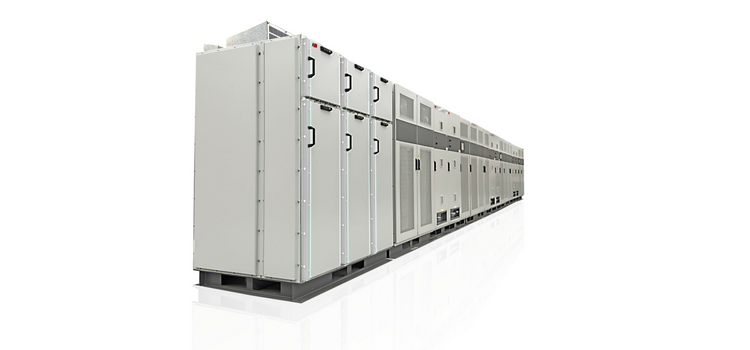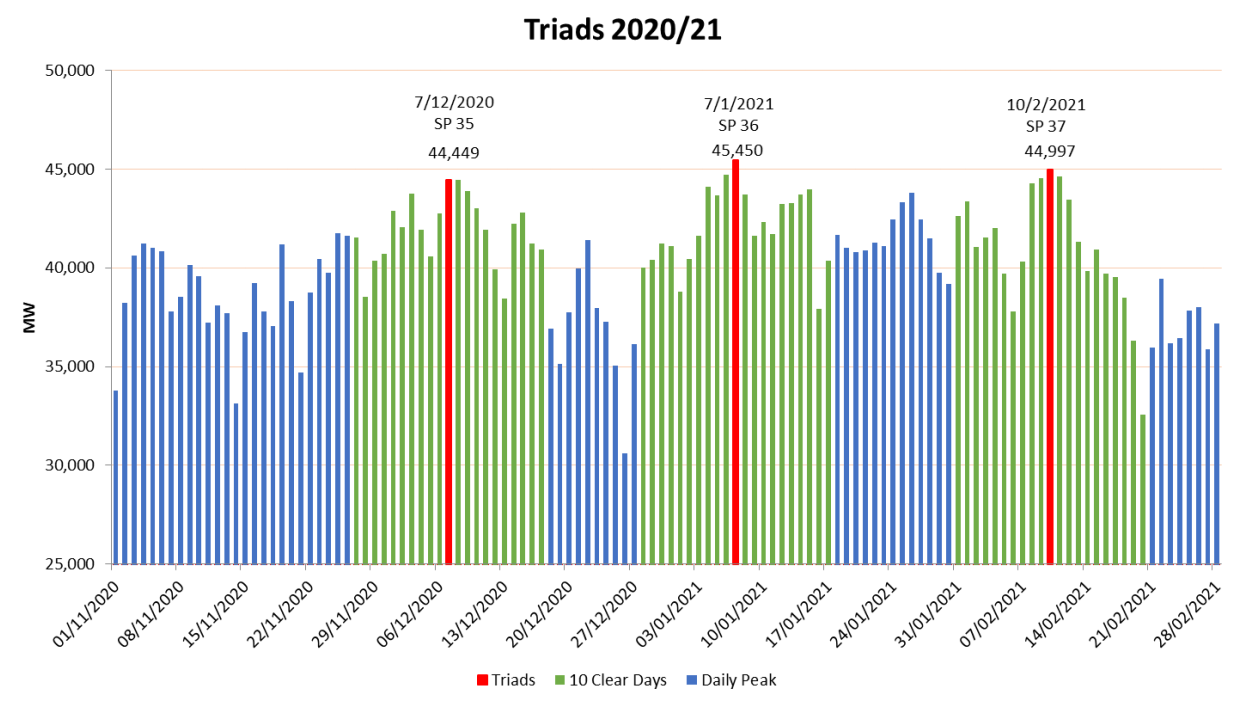
Up to 20% returns over 10 years! Generate income from the Grid. Cut your peak time electricity charges.
With around 30 GigaWatts of older fossil fuel and nuclear generation due to be decommissioned by 2025, the UK is marching towards an energy capacity gap. The capacity margin, the buffer between peak demand and supply, has tightened, and the National Grid is being forced to take measures to secure additional capacity.
Historically coal has accounted for a large proportion of current UK balancing services, but coal will be fully decommissioned by 2024, which will make the problem of balancing demand and supply in the National Grid even more challenging.
Electricity Market Reform (EMR) is the cornerstone of the government’s programme to respond to the need to ensure security of supply, whilst decarbonising the supply and minimising the cost of energy to consumers. Alongside the introduction of Contracts for Difference to support investment in low-carbon generation, the introduction of the Capacity Market is the key reform introduced under EMR.
The main goal of the Capacity Market is to ensure adequate capacity is available. It is designed to support the development of more active demand management, whilst introducing payment for reliable sources of capacity. It provides a unique opportunity for businesses to be part of the UK smart grid with incentives to get involved in the form of capacity payments. These are available via annual auction, and have so far cleared at as much as £27,500 per MW of capacity. The capacity must be on ‘standby’ 24 hours a day, 7 days a week. Battery storage is ideal for the Capacity Market.
System frequency is a continuously changing variable, determined by the real time balance between demand and supply. If demand exceeds supply, frequency falls, and vice versa.
The National Grid is obliged to control frequency within certain limits set by the Electricity Supply Regulations which state frequency must be within 1% either side of 50Hz. With the decommissioning of the more responsive power plants, new Frequency Response methods are being sought. The National Grid tenders for the firm provision of dynamic response (second by second) and non-dynamic response (targeted at a defined frequency deviation).
Batteries are suitable for Firm Frequency Response (FFR), as well as other forms of frequency response. For FFR response must be within 10 seconds (primary) or 30 seconds (secondary) and sustained for up to 30 minutes.
The Capacity Market and Frequency Regulation present two exciting income opportunities for owners of large scale (50kW+) battery storage systems.
The benefits of commercial battery storage are open to businesses, schools, universities and other public sector bodies with an import connection sized at 500kVA and above (guideline only), some headroom between demand and maximum capacity, and ideally with an export connection already in place, should consider taking advantage of these market opportunities, as well as the various cost saving opportunities discussed below. In order to do so they will need to install a commercial battery.
Most such businesses will not be in a position to enter directly into the Frequency Regulation market as to do so currently requires a 10MW capacity. However, they can participate via an Aggregator, a relatively new breed of organisation which aggregates capacity and remotely controls a number of ‘Demand Response’ assets, sufficient to allow the Aggregator to tender for Frequency Regulation and Capacity Market contracts.
Spirit works with a handful of Aggregators. We tender each opportunity out to these Aggregators and, depending on their appetite for the opportunity, they submit an income proposal for the battery asset. The selected Aggregator will contract directly with the battery owner. Spirit also optimises the choice of battery to maximise revenue.
Please call us on 0118 951 4490 or email commercial@spiritenergy.co.uk if you would like further information.
The Capacity Market and Frequency Regulation markets are already attracting ‘pure-play’ battery farm investments where there is no on-site load. For high energy users with an on-site load, batteries also present a cost avoidance opportunity, known as ‘time-shifting’. In order to understand this, it is helpful to understand the DNO billing structure underlying the billing of half-hourly metered properties.
Half-hourly metered properties incur a number of charges originating from the DNO that are related to consumption during certain time windows, primarily the peak demand window of 4pm-7pm weekdays, either in winter or all year round.
Specifically, these charges are as follows:
| Time periods | Red Time Band | Amber Time Band | Green Time Band |
| Mon to Fri (inc Bank Holidays) | 16:30-19:30 | ||
| 7:30 - 16:30 | |||
| 19:30 - 22:00 | |||
| 00:00 - 7:00 | |||
| 21:30 - 24:00 | |||
| Sat and Sun | 00:00 - 9:30 | ||
| 21:30 - 24:00 | |||
| LV HH metered surcharge | 0.141p /kWh |
For example, if a business has a demand of 750kW in one of the half hours, 860kW in the next and 730kW in the last, the average demand is 780kW, and the business will be charged 780 times the per kW rate applying in its area (see table below).

| Zone | Location | 17/18 (£/kW) | 18/19 (£/kW) | 19/20 (£/kW) | 20/21 (£/kW) | 21/22 (£/kW) |
| 1 | Northern Scotland | 29.58 | 47.20 | 53.96 | 59.83 | 64.78 |
| 2 | Southern Scotland | 30.48 | 32.07 | 37.20 | 43.50 | 47.00 |
| 3 | Northern | 39.22 | 43.06 | 48.70 | 53.61 | 58.60 |
| 4 | North West | 45.25 | 49.96 | 55.84 | 61.64 | 66.94 |
| 5 | Yorkshire | 44.97 | 49.84 | 55.70 | 61.17 | 66.43 |
| 6 | N Wales & Mersey | 46.79 | 51.29 | 57.18 | 63.24 | 69.08 |
| 7 | East Midlands | 47.89 | 53.18 | 59.20 | 64.97 | 70.50 |
| 8 | Midlands | 49.46 | 54.49 | 60.49 | 66.43 | 72.41 |
| 9 | Eastern | 49.62 | 54.95 | 60.66 | 66.49 | 72.33 |
| 10 | South Wales | 45.55 | 50.61 | 56.36 | 62.58 | 71.97 |
| 11 | South East | 52.54 | 57.31 | 63.15 | 69.14 | 75.21 |
| 12 | London | 54.97 | 60.16 | 66.02 | 72.09 | 78.11 |
| 13 | Southern | 53.41 | 58.44 | 63.85 | 70.00 | 76.38 |
| 14 | South Western | 51.96 | 56.89 | 63.51 | 67.44 | 74.78 |
These charges provide an opportunity to time-shift with on site storage. The user buys electricity outside of the peak periods and stores it for use during the peak 4pm – 7.30pm periods.
Our battery systems include the potential to procure an Uninterrupted Power Supply (UPS) with a 20 millisecond response. They can replace or supplement diesel backup generators as required and also provide protection against brownouts.
Supply increased power to a site to defer the need to upgrade the grid connection.
It always makes sense to use electricity at the point of generation, thus minimising transmission losses.
Furthermore in a world where electricity is an increasingly scarce resource, there is an environmental and social value in storing energy on site for later use, particularly if such use is at times of peak demand across the grid. Storage reduces the need for further fossil fuel investment.
Copyright © Spirit Energy 2026 · info@spiritenergy.co.uk · 0118 951 4490
Jobs and Careers
Interested in joining the Spirit team? Email jobs@spiritenergy.co.uk
Spirit House, 25 Albury Close, Reading, RG30 1BD
(Location formerly known as 44 Portman Road, Reading, RG30 1EA)
Spirit Energy is the trading name of Spirit Solar Ltd · UK Company Number 07138647
Although care is taken to ensure that the information on our website (www.spiritenergy.co.uk) and any guides, calculators or checklists provided by us, electronically or otherwise, are accurate and up-to-date, we cannot accept any responsibility for mistakes or omissions. We enter into no express or implied conditions, warranties, terms or representations regarding the quality, accuracy or completeness of the information. We exclude to the extent lawfully permitted all liability for loss or damage, whether direct, indirect or consequential arising out of your use of our website or any guides, calculators or checklists provided by us, or from any information or omission contained in our website or any guides, calculators or checklists provided by us.